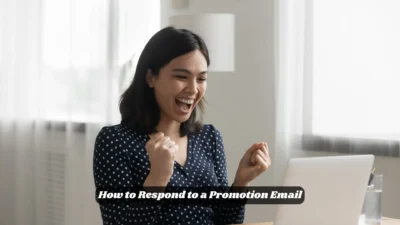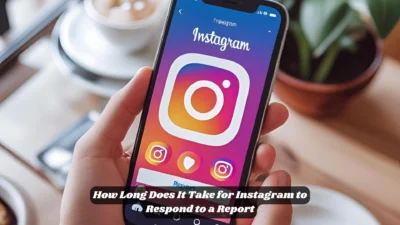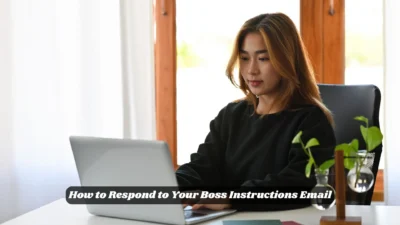You’ve typed and erased your email reply a few times, wondering: Is there a better way to say this?
Maybe you’re about to send an update to your manager, thank a client, or follow up on an interview.
You want to sound polite, clear, and professional — but without repeating the same old phrases like Thanks for your email or I look forward to hearing from you.
If you’re searching for a smarter, more polished way to respond to emails professionally, your search ends here.
The truth is, different situations call for different tones. A formal email to your boss needs different wording than a quick reply to a coworker.
A thank-you message after a job interview should sound warmer than a response to a complaint.
That’s why this guide covers a range of expressions to suit every professional email scenario. Whether you’re writing to a client, colleague, or recruiter, we’ve got you covered.
Sorry Generator
Formal Ways to Say Responding to Your Email
Use these phrases in business letters, official documents, or emails to managers, directors, and clients:
- I hope this message finds you well
- Thank you for reaching out
- I appreciate your message
- I am writing in response to your recent correspondence
- Your message has been received and noted
- I would like to address your concerns
- I am grateful for your prompt response
- Thank you for bringing this to my attention
- I acknowledge receipt of your email
- I have reviewed your message carefully
- Please allow me to respond to your inquiry
- I am following up regarding your email
- Kindly find my response below
- I appreciate your detailed message
- I have taken note of your request
- Allow me to clarify
- In reference to your email
- I am reaching out with regard to your query
- I am happy to provide the requested information
- Please see my response attached
- I am available should you need further assistance
- Your message has been escalated to the appropriate department
- I will look into this matter personally
- Thank you for your patience while we reviewed this
- We value your input and will respond accordingly
- I am pleased to respond
- Kindly accept my response below
- Following up as promised
- Thank you for the opportunity to address this
- I have consulted with the team and here is our response
- We take your feedback seriously and have addressed it
Informal Ways to Say Responding to Your Email
These casual responses are great for colleagues, internal teams, or people you know well:
- Got your email
- Just saw your message
- Thanks for the heads-up
- Quick reply to your note
- Read your email, here’s my take
- Circling back on this
- Appreciate the update
- No worries, I’ve got it
- Following up on what you said
- I’m on it
- Here’s a quick reply
- Jumping in to respond
- Hey, thanks for reaching out
- Let me get back to you
- Just wanted to reply
- Saw your note—thanks
- I’ll take care of it
- Sounds good, here’s my input
- Thanks for keeping me in the loop
- Noted, thanks
- I’m replying to your message
- Quick thoughts below
- OK, here’s what I think
- Cheers for the email
- Got your message—looks fine
- Thanks, here’s a quick follow-up
- Replying here so you have it
- On it—will get back soon
- Thanks, will handle
- Appreciate your message
- Got it—thanks
Idiomatic Ways to Say Responding to Your Email
These add color and tone to your messages but should be used carefully in professional settings:
- Getting back to you
- Touching base
- Looping you in
- Just chiming in
- Picking up where we left off
- Giving you a heads-up
- Checking in
- Putting in my two cents
- Back in your court
- Taking a stab at this
- Giving you a quick rundown
- We’re on the same page
- Filling in the blanks
- Passing this along
- Keeping the ball rolling
- Clearing the air
- We’ve got this covered
- Giving it a look
- Wrapping up the loose ends
- Laying it out
- Just a quick ping
- Giving it my best shot
- Tying up the ends
- Spelling things out
- Putting this to bed
- Closing the loop
- Letting you know
- Passing along my thoughts
- Sending this your way
- Circling back around
- Picking this up again
Professional Ways to Say Responding to Your Email
These are perfect for email replies in the workplace, no matter your role or industry:
- Thank you for your email—here’s my reply
- I’ve reviewed your message and here’s my response
- Please find my comments below
- I appreciate your input and here’s my take
- Your feedback is helpful—see my thoughts below
- Thank you for looping me in
- Here’s how we plan to proceed
- Below are my thoughts on the matter
- Following up on our discussion
- Please see my response inline
- I have outlined my response below
- Thank you for the context, here’s my answer
- Attached are the requested details
- I’m available to discuss this further
- Here is a summary of my response
- Thanks for sharing—I’ve responded accordingly
- Please review the reply and let me know
- Your points are well taken—here’s my feedback
- Addressing each point below
- We’re aligned—see next steps below
- Thanks for the clarification—responding now
- I’ve provided additional details
- We’re reviewing your concerns
- Replying here for visibility
- I’ve addressed your questions one by one
- Here’s a breakdown of our plan
- Let me know if you need more clarity
- Appreciate your insight—see my input
- This aligns with our expectations—see below
- Thanks for your message—moving forward with this
- Please confirm receipt and next steps
Conclusion
Knowing how to respond to emails professionally isn’t just about sounding smart. It’s about building trust, showing respect, and keeping communication clear. The words you choose can change the tone, clarify your intent, and strengthen your relationships at work.
From formal responses to quick updates, this guide gives you over 120 ways to say it right — in any situation. Practice using them, mix them into your own style, and you’ll never stare blankly at a reply box again.

James Smith is an acclaimed fiction writer and storyteller whose work explores the human condition through a lens of emotional depth and sharp observation. Known for his captivating prose and unforgettable characters, James has carved a unique space in contemporary literature.
With a background in English Literature and over a decade of writing experience, his stories have been featured in numerous literary magazines and anthologies. James is passionate about mentoring emerging writers and frequently speaks at literary events and creative writing workshops.
Selected Works:
-
Beneath the Quiet Sky
-
The Echoes We Leave Behind
-
Fragments of a Forgotten Summer




